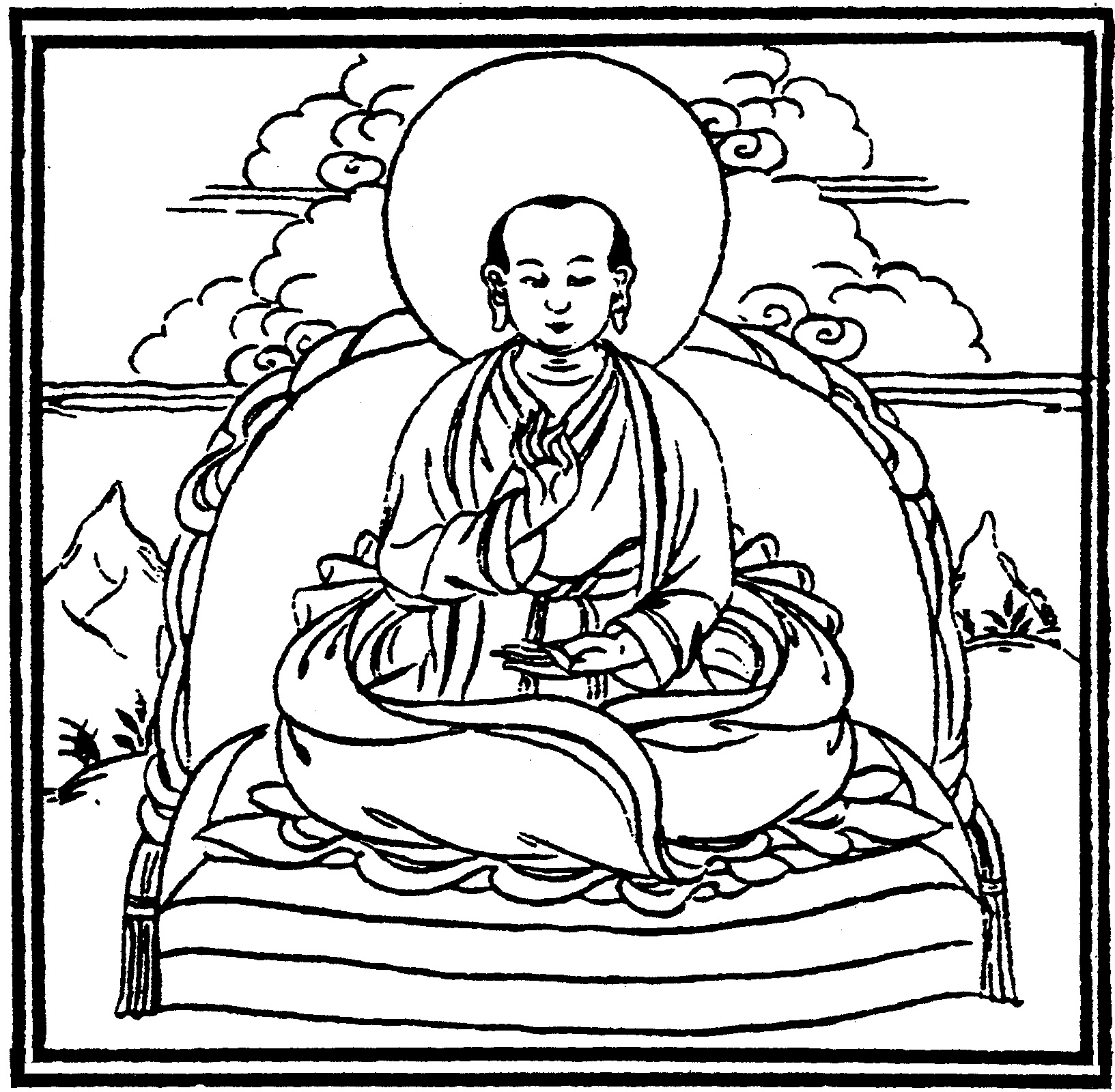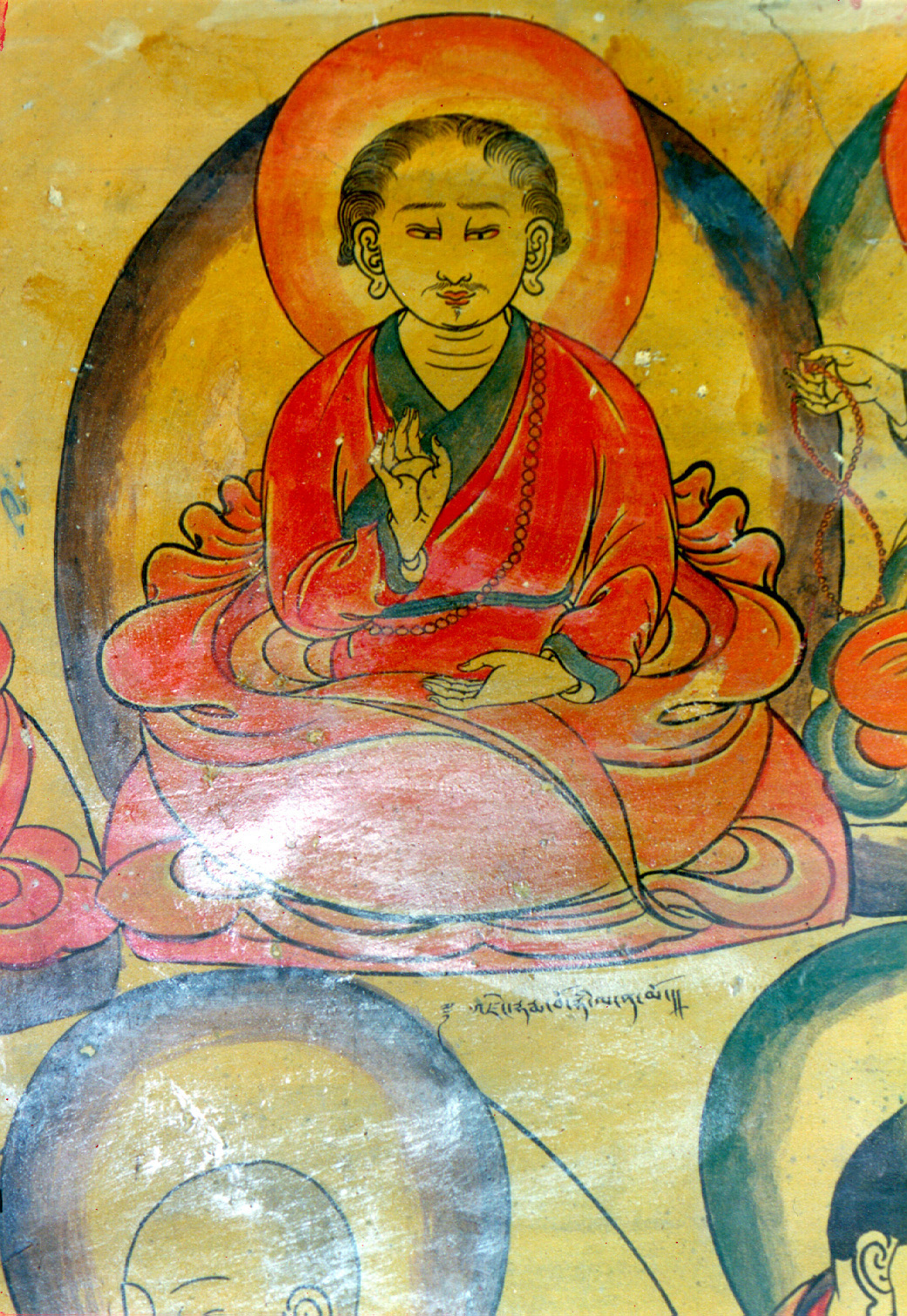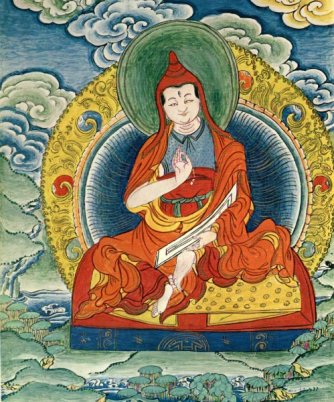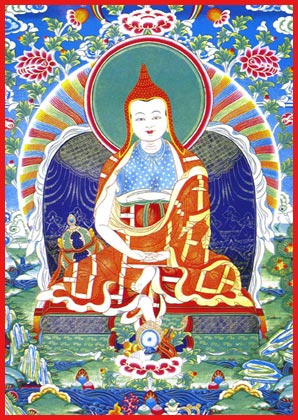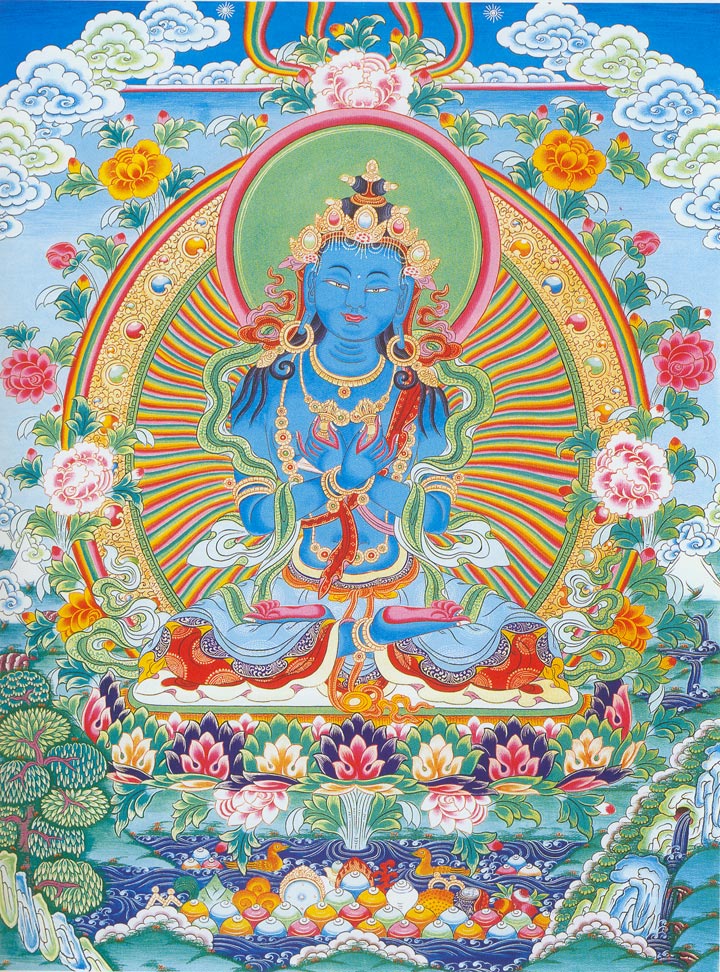|
Seventeen Tantras
The ''Seventeen Tantras of the Esoteric Instruction Series'' () or the ''Seventeen Tantras of the Ancients'' (''rnying-ma'i rgyud bcu-bdun'') are an important collection of tantras in the Nyingma school of Tibetan Buddhism. They comprise the core scriptures of the "esoteric instruction series" ('' Menngagde'') of Dzogchen teachings and are its most authoritative scriptures. The Seventeen Tantras are part of the '' Vima Nyingthig'' (''"Inner Essence of Vimalamitra"''), a terma cycle of Dzogchen texts revealed by the treasure discoverer Zhangton Tashi Dorje (c. 1097-1127) and associated with the 8th century Indian monk Vimalamitra who is traditionally believed by the Nyingma school to have first brought these texts to Tibet. The ''Vima Nyingthig'' itself consists of ' tantras' (''rgyud''), 'agamas' (''lung''), and ' upadeshas' (''man ngag''). The other texts are mainly exegetical literature on the material found in the Seventeen tantras. The Seventeen Tantras explain the vie ... [...More Info...] [...Related Items...] OR: [Wikipedia] [Google] [Baidu] [Amazon] |
Vimalamitra 2
Vimalamitra () was an 8th-century Indian Buddhist monk. His teachers were Buddhaguhya, Jnanasutra, Jñānasūtra and Sri Singha, Śrī Siṃha. He was supposed to have vowed to take rebirth every hundred years, with the most notable figures being Rigzin Jigme Lingpa, Khenchen Ngagchung, Kyabje Drubwang Penor Rinpoche and Kyabje Yangthang Rinpoche. He was one of the eight teachers of the great Indian adept Padmasambhava. Centuries later, Terma (religion), terma and various works were attributed to him. Chatral Sangye Dorji (1913-2016) was said to have received a mala rosary from a man who was at the time dressed as an Indian Sadhu. It was only later that Rinpoche told his attendants that he received a mala on that day from Vimalamitra in reality. The attendants were curious and returned to the place where they had met a sadhu only to be left dumbstruck. The sadhu was not to be found anywhere. One scholar remarked that the historical Vimalamitra "would have been astonished to find ... [...More Info...] [...Related Items...] OR: [Wikipedia] [Google] [Baidu] [Amazon] |
Tögal
In Dzogchen, ''tögal'' () literally means "crossing, surpassing the skull." It is sometimes translated as 'leapover,' 'direct crossing,' or 'direct transcendence.' ''Tögal'' is also called "the practice of vision," or "the practice of the Clear Light" ('' od-gsal''). Definition Vimalamitra's ''Great Commentary'', defines ''tögal'' as "the practice of the direct perception of pristine consciousness" which is for "the diligent who gradually attain buddhahood through meditation." Chökyi Nyima Rinpoche glosses the term as "to proceed directly to the goal without having to go through intermediate steps." Jigme Lingpa follows Longchenpa in seeing the visionary practice of ''tögal'' as the highest level of meditation practice. ''Tögal'' is also called "the practice of vision", or "the practice of the Clear Light ('' od-gsal'')". Practice ''Tögal'' is practiced in a completely dark setting or through sky gazing. The practices engage the subtle body of psychic channels, winds ... [...More Info...] [...Related Items...] OR: [Wikipedia] [Google] [Baidu] [Amazon] |
Bodhgaya
Bodh Gayā is a religious site and place of pilgrimage associated with the Mahabodhi Temple complex, situated in the Gaya district in the Indian state of Bihar. It is famous for being the place where Gautama Buddha is said to have attained enlightenment (Pali: ) under what became known as the Bodhi Tree. Since antiquity, Bodh Gayā has remained the object of pilgrimage and veneration for Buddhists. In particular, archaeological finds, including sculptures, show that the site was in use by Buddhists since the Mauryan period. For Buddhists, Bodh Gayā is the most important of the four main pilgrimage sites related to the life of Gautama Buddha, the other three being Kushinagar, Lumbini, and Sarnath. In 2002, Mahabodhi Temple, located in Bodh Gayā, became a UNESCO World Heritage Site. History Bodh Gayā is considered the holiest site in Buddhism. Known as Uruvela in the Buddha's time, it is by the bank of the Lilajan River. The first temple at the site was built b ... [...More Info...] [...Related Items...] OR: [Wikipedia] [Google] [Baidu] [Amazon] |
Longdé
Longdé (, ) is the name of one of three scriptural divisions within Dzogchen, which is itself the pinnacle of the Yana (Buddhism)#The nine yanas, ninefold division of practice according to the Nyingma school of Tibetan Buddhism. The name "longdé" is translated as "Space Division" or "Space Series" of Dzogchen and emphasises the emptiness () or spaciousness () aspect of the Natural State. Due to the different approaches of various Dzogchen lineages, three series of teachings have developed, of which longdé is one. The other two divisions or series are semde and menngagde. Penor Rinpoche attributes longdé to Dorje Zampa, Sri Singha and Vairotsana's lineage. History The series of Space reflects the developments of the 11th–14th centuries and emphasizes "space" or "expanse" (''klong''). According to Sten Anspal this class of texts "is difficult to define or characterize uniformly" and "were not unified into a single system". Because of this, it has been seen either as nearl ... [...More Info...] [...Related Items...] OR: [Wikipedia] [Google] [Baidu] [Amazon] |
Semde
Semde (; Sanskrit: , "mind division", "mind class" or "mind series" is the name of one of three scriptural and lineage (Buddhism), lineage divisions within the Dzogchen (Great Perfection) tradition. The Nyingma school of Tibetan Buddhism traditionally classifies its Dzogchen teaching into three main divisions: Semde, Longdé (Space Series) and Menngagde (Secret Instruction Series). Semde texts are mostly said to be translations by figures of History of Tibetan Buddhism#First dissemination (7th–9th centuries), the early transmission (7th–9th centuries) of Buddhism to Tibet like Sri Singha, Śrī Siṅgha, Vairotsana and Vimalamitra. These texts emphasize the "awakened mind" (Tibetan: ''byang-chub-kyi sems'', Skt. ''bodhicitta''), which is the true nature of the mind and is essentially pure and perfect, just like Buddhahood. Semde texts critique tantric practice as being based on effort, and instead promote simple and effortless contemplation of the mind and its Emptiness (Buddhi ... [...More Info...] [...Related Items...] OR: [Wikipedia] [Google] [Baidu] [Amazon] |
Mañjuśrīmitra
Mañjuśrīmitra (d. 740 CE) () was an Indian Buddhism, Buddhist scholar. He became the main student of Garab Dorje and a teacher of Dzogchen. Nomenclature and etymology Mañjuśrī-mitra was his ordination-name—before ordination he was named "Siddhi-garbha" and "Samvara-garbha" His mother's name was Kuhanā. Birth and early life The exact location of Mañjuśrīmitra's birth is unknown. Mañjuśrīmitra, the son of an upper class Brahmin from a village to the west of Bodh Gaya, was initially schooled at home. Later he was a resident at Nalanda University where he became a respected Yogachara, Yogācāra scholar and practitioner. Works Many of Mañjuśrīmitra's works deal with a Tantra, tantric text Mañjuśrīnāmasamgīti. He was the person who divided the Dzogchen teachings into three series of Semde, Longdé and Manngagde. In the Tibetan Buddhist Vajrayana tradition, Mañjuśrīmitra is held to have transmitted the Dzogchen teachings to Sri Singha. The "Six Meditation Exp ... [...More Info...] [...Related Items...] OR: [Wikipedia] [Google] [Baidu] [Amazon] |
Erik Pema Kunsang
Erik Pema Kunsang (born Erik Hein Schmidt) is a Danish Dharma teacher and translator. He was, along with Marcia Binder Schmidt, director of Rangjung Yeshe Translations and Publications in Kathmandu Kathmandu () is the capital and largest city of Nepal, situated in the central part of the country within the Kathmandu Valley. As per the 2021 Nepal census, it has a population of 845,767 residing in 105,649 households, with approximately 4 mi .... He has translated over fifty volumes of Tibetan texts and oral teachings. Erik has been the assistant and translator for Tulku Urgyen Rinpoche and his sons since the late 1970s. He was active in facilitating masters of the Practice Lineages to teach in the West. Erik Pema Kunsang is currently the resident teacher at the buddhist retreat center, Rangjung Yeshe Gomde Denmark. He teaches widely at Gomde and online, especially within the Bodhi Training program. Within Bodhi Translations, Erik Pema Kunsang leads the translation of ... [...More Info...] [...Related Items...] OR: [Wikipedia] [Google] [Baidu] [Amazon] |
Kuntu Zangpo
The Ādi-Buddha (, Ch: 本佛, Jp: honbutsu, First Buddha, Original Buddha, or Primordial Buddha) is a Mahayana Buddhist concept referring to the most fundamental, supreme, or ancient Buddha in the cosmos. Another common term for this figure is Dharmakāya Buddha. The term emerges in tantric Buddhist literature, most prominently in the Kalachakra. "Ādi" means "first", such that the Ādibuddha was the first to attain Buddhahood. "Ādi" can also mean "primordial", not referring to a person but to an innate wisdom that is present in all sentient beings. In East Asian Buddhism, the term 本佛 (běn fó, original Buddha, root Buddha) also appears in the works of Tiantai and Tendai school, referring to the original Buddha of the ''Lotus Sutra'' which was also later identified with the cosmic Buddha Mahavairocana. It and similar terms were also used in the traditions of Chinese Esoteric Buddhism and Shingon to refer to the cosmic Buddha Mahavairocana. Indian sources According ... [...More Info...] [...Related Items...] OR: [Wikipedia] [Google] [Baidu] [Amazon] |
Śrīsiṁha
Sri Singha (Sanskrit: , ) was the teacher of Padmasambhava, Vimalamitra, and Vairotsana. He was a principal student and dharma-son of Mañjuśrīmitra in the Dzogchen lineage, and is credited by the Nyingma school with introducing Dzogchen to Tibet. Life Sri Singha is the son of King 'Accomplisher' and his wife queen Nantakā. A.W. Barber notes that Sri Simha took the Atiyoga lineage to Andhra Pradesh, Andhra, in South India. He made his residence at Dhanyakataka. Thus, it would appear that Sri Simha took the Atiyoga line to Andhra and made his residence at the famous Dhanyakataka along the Krishna River. From here it was transmitted to teachers who then took the line to Tibet and China. Achievements Śrī Siṃha brought the Secret Mantra teachings from beneath the Vajra Throne in Bodhgaya to the 'Tree of Enlightenment' in China, where he concealed them in a pillar of the 'Auspicious Ten Thousand Gates Temple'. Śrī Siṃha conferred the Eighteen Dzogchen Tantras (Tibetan: ... [...More Info...] [...Related Items...] OR: [Wikipedia] [Google] [Baidu] [Amazon] |
Longchenpa
Longchen Rabjam Drimé Özer (), or simply Longchenpa (1308–1364, "The Great One Who Is the Vast Cosmic Expanse") was a Tibetan scholar-yogi of the Nyingma school, the 'Old School' of Tibetan Buddhism. According to tibetologist David Germano, Longchenpa's work led to the dominance of the Longchen Nyingthig lineage of Dzogchen, the Great Perfection, over the other Dzogchen traditions. He is also responsible for the scholastic systematization of Dzogchen thought within the context of the wider Tibetan Vajrayana tradition of Buddhist philosophy. Dzogchen thought was highly developed among both the Old School and New Sarma schools. Germano also notes that Longchenpa's work is "generally taken to be the definitive expression of the Great Perfection with its precise terminological distinctions, systematic scope, and integration with the normative Buddhist scholasticism that became dominant in Tibet during the thirteenth and fourteenth centuries." Longchenpa is known for his vo ... [...More Info...] [...Related Items...] OR: [Wikipedia] [Google] [Baidu] [Amazon] |
Rigdzin Kumaradza
Rigdzin Kumaradza (1266–1343) was a Dzogchen master in the lineage of the ''Vima Nyingthig''. Nomenclature, orthography and etymology Kumārarāja, Kumārāja and Kumaraja (Sanskrit) is sometimes also orthographically represented as Kumārarādza and Kumārādza. Overview Kumaradza was a Tibetan yogic mendicant famous for his austere nomadic lifestyle and deep flow meditation styles. Nomadic in orientation and obscure in siddhi, he was renowned as genuine realizer of Vajrayana Buddhist luminous clarity. Kumaradza's esoteric processes reflected a kindly though abrupt and forceful demeanor. There are accounts of how some of his students were meditating in mere animal skin shelters as quasi-impromptu protection against ferocious high desert winds. These small camps subsisted on scant donations. The focus of his practices concentrated on secret cognizance yogas of "naked awareness" or "natural mind" (rigpa). His striking purview of existence was very powerful, particular ... [...More Info...] [...Related Items...] OR: [Wikipedia] [Google] [Baidu] [Amazon] |
Garab Dorje
Garab Dorje (c. 665) () was the first human to receive the complete direct transmission teachings of Sutra, Tantra and Dzogchen. The circumstances of his birth are shrouded in different interpretations, with some accounts describing a miraculous birth by a virgin daughter of the king of Uddiyana. Garab Dorje became the first teacher of Dzogchen ("Great Perfection", also called ''Ati Yoga'') teachings. Garab Dorje's core teachings revolve around understanding the nature of the mind as the original Buddha, beyond birth and cessation, emphasizing meditation as a practice of allowing this natural state without seeking, this is the highest teaching in Buddhism. According to the Nyingma school tradition of Tibetan Buddhism Tibetan Buddhism is a form of Buddhism practiced in Tibet, Bhutan and Mongolia. It also has a sizable number of adherents in the areas surrounding the Himalayas, including the Indian regions of Ladakh, Gorkhaland Territorial Administration, D ..., he transmit ... [...More Info...] [...Related Items...] OR: [Wikipedia] [Google] [Baidu] [Amazon] |
